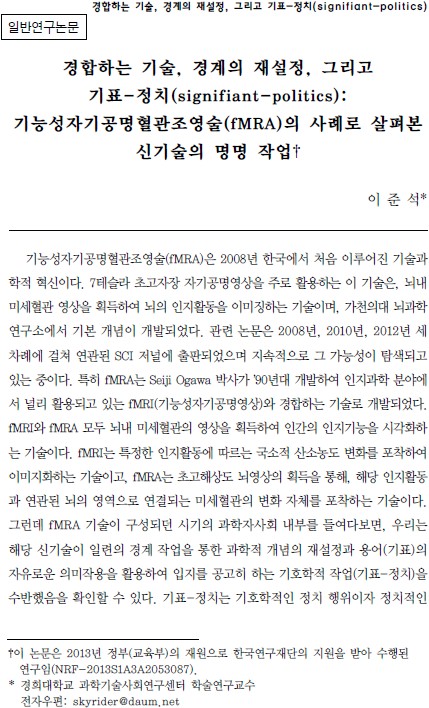
| Title |
: Contested Technologies, Resetting the Boundary, and the ʻsignifiant-politicsʼ: Semiotical Governance of New Technology in the Case of fMRA |
| Date |
: 2014. 12. |
| Journal title |
: Journal of Science and Technology Studies |
| Author |
: Lee, June-Seok |
| Contact us |
: csts@khu.ac.kr |
| Abstract |
: Functional Magnetic Resonance Angiography (fMRA) was a technoscientific innovation that allows scientists to directly view the changes made in the blood vessels of a brain. fMRA was first developed at Neuroscience Research Institute (NRI) in Korea. fMRA mainly utilizes 7 Tesla MRI technology, and NRI is equipped with the instrument. First article on fMRA was published in 2008, and two more papers in 2010 and 2012 consecutively had been published on the newly developed technique. However, fMRA is a competitive technology with existing fMRI. Both techniques capture microvascular changes in a brain, and by doing it, both techniques visualize the cognitive and affective changes. fMRI technology was introduced by Seiji Ogawa in the early 1990ʼs and has been widely used since then. In contrast, fMRA was a newer technology and rather unknown. Developers of fMRA in NRI used series of signifiant-politics in order to make it better known to scientific community as well as public. By resetting the boundaries of existing concept of fMRI, they tried to lower the threshold of a new concept/technique. This case study shows how technoscientists use semiotic strategies governing new technology.
Click the following link for downloading the article: http://www.dbpia.co.kr/Article/3648651 |
|

